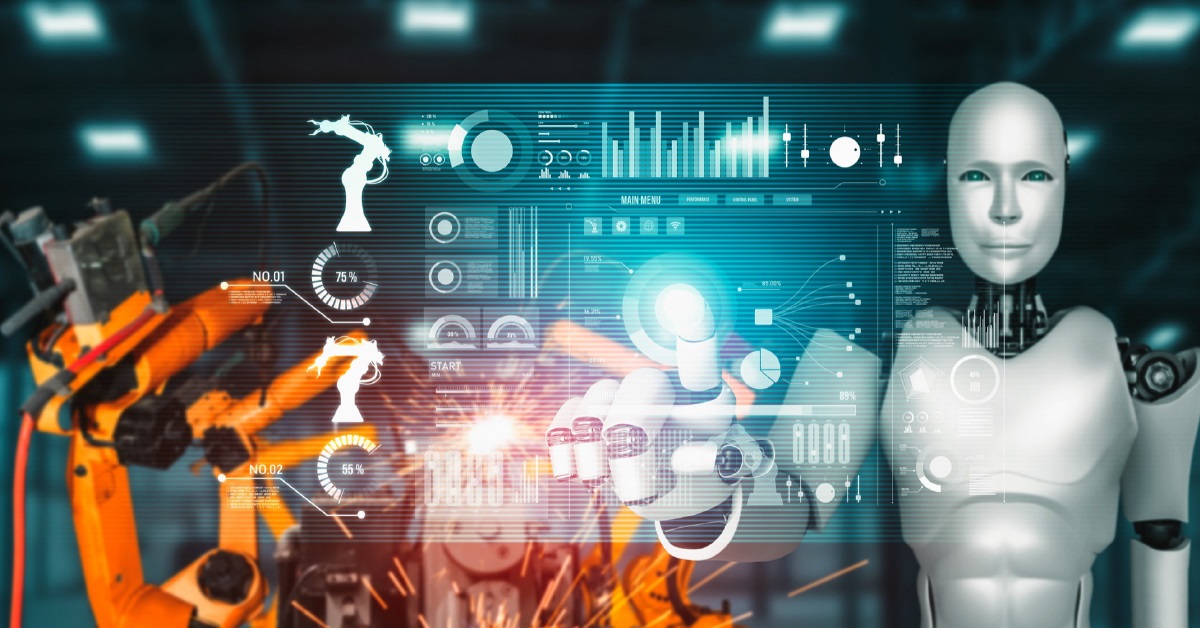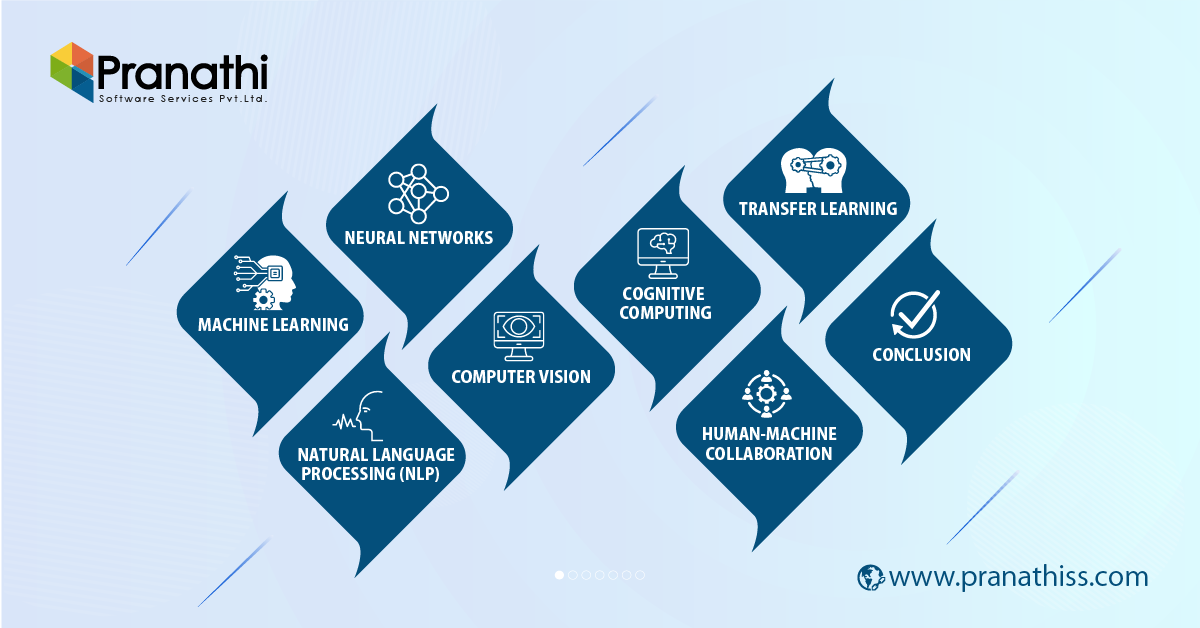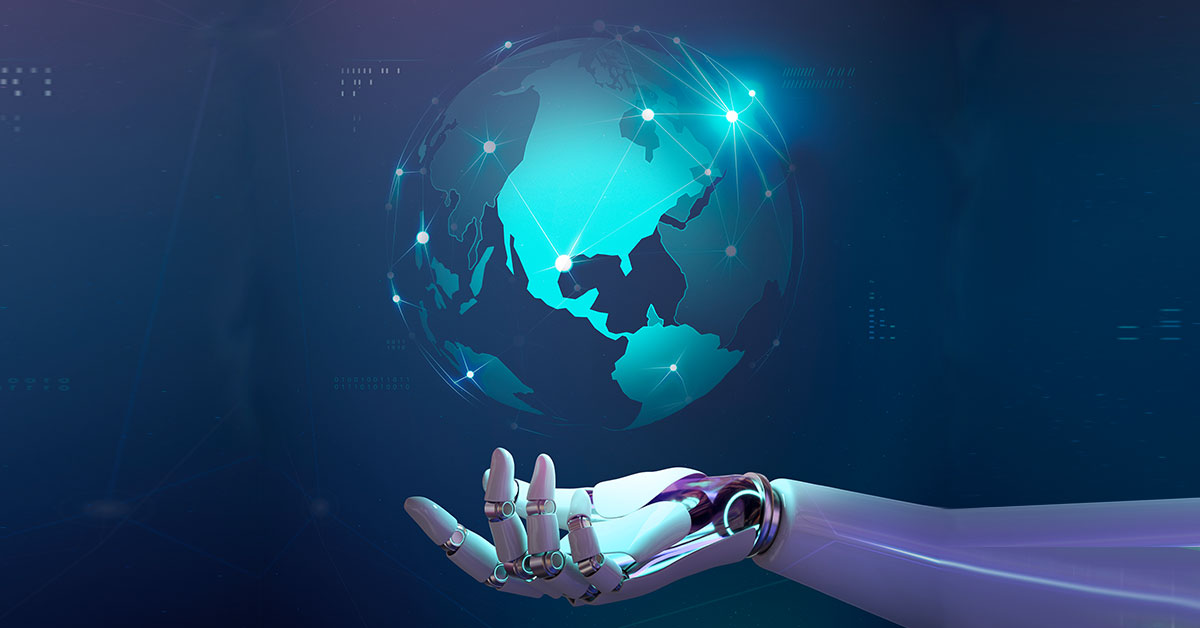Simulating Human Intelligence in Machines with AI

5 min read
Simulating human intelligence in robots so they can comprehend, reason, learn, and adapt just like people is one of the ultimate goals of AI research. AI has advanced significantly in recent years, allowing robots to carry out jobs that were previously thought to be the sole preserve of humans. Machine learning techniques collectively contribute to the learning and adaptation aspect of AI systems, enabling them to improve their performance, generalize from data, and adapt to new situations.
The Main Objective behind Simulating Human Intelligence in Machines Using AI Technologies
The main goal of applying AI technology to simulate human intelligence in machines is to build artificial systems that can replicate and reproduce human mental skill sets. The goal of this project is to make it possible robots to behave effectively. To complete tasks, make decisions, learn from experience, and interact with their environment. Including increasing productivity through work automation, resolving complex problem through data analysis and patterns recognition, and empowering robots. They are all designed to help people adapt to and grow from shifting situations.
In addition, the objective is to create natural ways of interaction between humans and machines. In which the latter can comprehend and produce human language, react to emotions, and help decision-making. By attaining these goals, AI technologies hope to revolutionize industries like healthcare, banking, and innovation. They also hope to help people with disabilities and shed light on the nature of human cognition by providing personalized experiences.
Advancements in NLP Contribute to Creating AI Systems
The advancement of NLP methodologies has significantly increased AI’s ability to understand and react to spoken language. AI systems are now able to comprehend subtle grammatical, contextual, and semantic distinctions thanks to cutting-edge NLP algorithms and deep learning techniques. A larger range of applications, including as chatbots, language translation, sentiment analysis, and text production, have benefited from these developments.
Understanding Human Intelligence
Perception, reasoning, problem solving, learning and emotional comprehension are just a few of the many cognitive processes that make up human intelligence. In order to construct systems that can interact with the outside environment and make judgements similarly to people. It is necessary to copy these process in machines.
Perception and Sensing
Giving computers the ability to detect and sense their surroundings is the first step in replicating human intellect. This call for the development of technologies like natural language processing and computer vision.
While natural language processing enables machines to understand and produce human and computer vision helps them to interpret and understand visual data from the world.
Reasoning and Problem-Solving
It is necessary to create algorithms and models. That can analyze data, come to logical conclusions, and handle challenging problems in order to simulate human like reasoning and problem solving. In order to achieve this capability, AI & Machine Learning approaches. Including symbolic reasoning and probabilistic reasoning, are essential.
Learning and Adaptation
Humans are skilled at picking up new skills and adjusting to new circumstances. A branch of AI called machine learning aims to replicate this feature of human intelligence. Machines can learn from data and get better over time using methods including supervised learning, unsupervised learning, and reinforcement leaning.
Emotional Understanding and Empathy
It’s more difficult to simulate emotional intelligence and empathy in machines. Human’s interaction and decision making are greatly influenced by emotions. Affective computing advances the creation of AI systems that can interact more organically with people by recognizing and responding to human emotions.
Creativity and Innovation
Human intelligence is often associated with creativity and innovation. While machines might not have inherent creativity, AI will use to generate novel solutions, designs, and ideas. By analyzing vast amounts of data and identifying patterns that humans might miss.
Challenges in Simulating Human Intelligence
Simulating human intelligence in machines is a monumental task that comes with several challenges:
Complexity
Intricate neurological, cognitive, and emotional process result in human intelligence. Complex models and algorithms are requiring to replicate this complexity in machine.
Common Sense Reasoning
Humans are endowed with common sense reasoning, which helps us to form intuitive conclusion and manage day to day circumstances. It’s still difficult to give machines the same common sense understanding.
Ethical Considerations
As robots become more intelligent, ethical issues such as decision making responsibility, transparency, and potential biases in AI systems start to surface.
Emotion and Empathy
Despite the fact that AI is capable of recognizing emotions, the subjective nature of emotions makes it challenging to accurately grasp and express empathy.
Unstructured Environments
Human intelligence can adapt to a variety of unstructured surroundings, where as robots frequently find it difficult to deal with novel circumstances.
The Key concepts for Artificial Intelligence-Based Human Intelligence Simulation
AI is complex and rapidly evolving area of research and technology. To crate technologies or systems suitable of performing tasks which generally require human intellectual abilities. Such as understanding language, recognizing structures, making decisions and acquiring knowledge from experience, human intelligence simulation is an aim. Below are some important concepts and techniques for AI based intelligence simulation in robots.

Machine Learning: The key elements of primary AI is machine learning, which includes teaching algorithms on massive data sets in order to discover the patterns and develop predictions. Machine can continuously become stronger at what they are programmed into through some techniques learning under supervision, autonomous learning.
Neural Networks: The structure and operation of the human brain served as the inspiration for the class of machine learning applications known as neural networks. Deep neural networks, often referred to as deep learning, have led to significant advancements in activities. Including audio and picture identification, natural language processing, and even gaming.
Natural Language Processing (NLP): The goal of NLP is to make it possible for computers to comprehend, translate, and create human language. This includes tasks like language translation, sentiment analysis, text generation, and chatbots.
Computer Vision: Computer vision involves enabling machines to understand and interpret visual information from the world. This has applications in image recognition, object detection, facial recognition, and autonomous vehicles.
Cognitive Computing: Cognitive computing aims to create systems that can imitate the way the human brain works. Such as abilities like understanding context, reasoning, and making decisions based on incomplete or uncertain information.
Transfer Learning: Transfer learning involves training a model on one task and then fine-tuning it for another related task. This approach can significantly speed up the learning process and improve performance.
Human-Machine Collaboration: Rather than aiming to replace humans, AI can also use to enhance human capabilities. Human-machine collaboration leverages AI’s strengths to assist humans in making better decisions, automating repetitive tasks, and providing insights from large datasets.
Conclusion
Simulating human intelligence in machines with AI is a multidisciplinary effort that involves advancements in computer science, neuroscience, psychology, and ethics. While we have made significant progress in various AI domains, there is still much research and development needed to achieve a level of AI that truly simulates the breadth and depth of human intelligence. Read more interesting articles in our blog.
Published: September 7th, 2023





